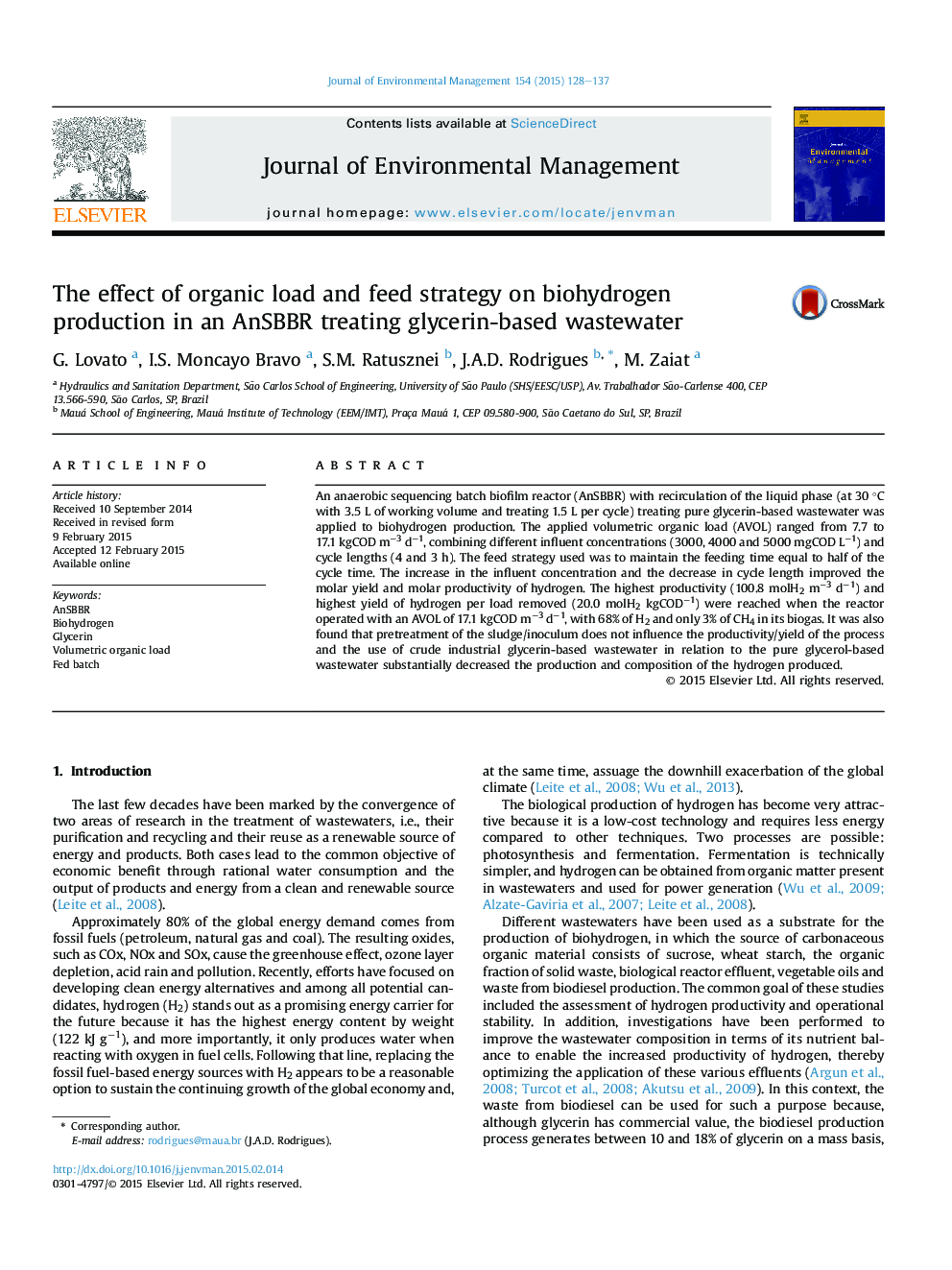| کد مقاله | کد نشریه | سال انتشار | مقاله انگلیسی | نسخه تمام متن |
|---|---|---|---|---|
| 7482393 | 1485258 | 2015 | 10 صفحه PDF | دانلود رایگان |
عنوان انگلیسی مقاله ISI
The effect of organic load and feed strategy on biohydrogen production in an AnSBBR treating glycerin-based wastewater
دانلود مقاله + سفارش ترجمه
دانلود مقاله ISI انگلیسی
رایگان برای ایرانیان
موضوعات مرتبط
مهندسی و علوم پایه
مهندسی انرژی
انرژی های تجدید پذیر، توسعه پایدار و محیط زیست
پیش نمایش صفحه اول مقاله

چکیده انگلیسی
An anaerobic sequencing batch biofilm reactor (AnSBBR) with recirculation of the liquid phase (at 30 °C with 3.5 L of working volume and treating 1.5 L per cycle) treating pure glycerin-based wastewater was applied to biohydrogen production. The applied volumetric organic load (AVOL) ranged from 7.7 to 17.1 kgCOD mâ3 dâ1, combining different influent concentrations (3000, 4000 and 5000 mgCOD Lâ1) and cycle lengths (4 and 3 h). The feed strategy used was to maintain the feeding time equal to half of the cycle time. The increase in the influent concentration and the decrease in cycle length improved the molar yield and molar productivity of hydrogen. The highest productivity (100.8 molH2 mâ3 dâ1) and highest yield of hydrogen per load removed (20.0 molH2 kgCODâ1) were reached when the reactor operated with an AVOL of 17.1 kgCOD mâ3 dâ1, with 68% of H2 and only 3% of CH4 in its biogas. It was also found that pretreatment of the sludge/inoculum does not influence the productivity/yield of the process and the use of crude industrial glycerin-based wastewater in relation to the pure glycerol-based wastewater substantially decreased the production and composition of the hydrogen produced.
ناشر
Database: Elsevier - ScienceDirect (ساینس دایرکت)
Journal: Journal of Environmental Management - Volume 154, 1 May 2015, Pages 128-137
Journal: Journal of Environmental Management - Volume 154, 1 May 2015, Pages 128-137
نویسندگان
G. Lovato, I.S. Moncayo Bravo, S.M. Ratusznei, J.A.D. Rodrigues, M. Zaiat,